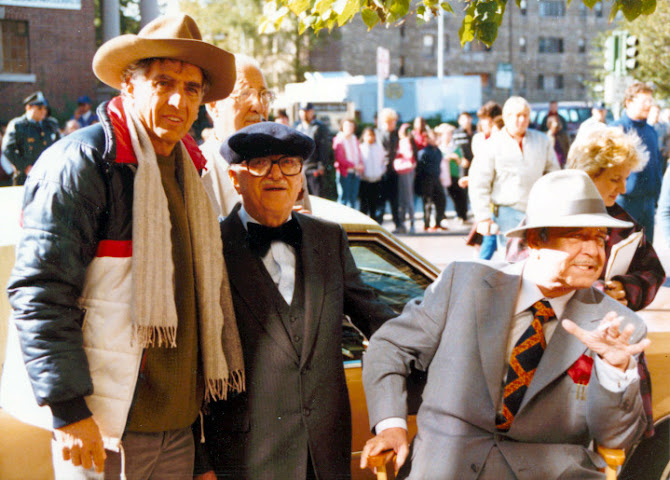There are many nostalgic memories about Chicago's Morse Avenue in the 50s, 60s, 70s, and 80s. Most include stories about Ashkenaz Deli, and for many, Ashkenaz was synonymous with Morse Avenue.
I want to share a first-hand family memory of another Morse Avenue institution one block west of the famous Ashkenaz Deli, Leonard's Juvenile Shop.
In 1948, Morrie's Menswear moved from a small store near Morse and Ashland to a larger store next to Ashkenaz Deli. In its place at the Northeast corner, 1550 West Morse Avenue, immediately next to Caswell's school supply store at 1552 West Morse, came Leonard's Juvenile Shop. "Infants to College" was proudly displayed on its awnings. Leonard's Juvenile Shop would remain there until 1988, when my father, Max Leonard, retired at age 84.
My sister Rochelle (Lake View H.S., 1948), brother Irv (Sullivan H.S., 1952) and I (Sullivan H.S., 1956) worked at the store doing stock and sales. We each began when we were about ten years old and worked through our graduation from high school.
Many who walked by the store probably remember the cute faces of the children's manikins, always smiling at the window shoppers. The same faces had been there for 40 years, and they are probably still around in some display windows somewhere in the Chicago area, probably as cute as ever; unlike us, they don't age. Over the years, they were dressed very stylishly; crinoline slips, Pea coats, Grais leather jackets, pedal pushers, tank suits, 'Weather Winkie' snowsuits, bobby sox, corduroy pants, and jumpers, all great products and memories.
In early 1985, two gentlemen came into the store and asked if my father, then 81 years old, would be interested in allowing the store to be used as a set in a movie. One of those gentlemen was the Hollywood director Garry Marshall. He said they were making a movie called "Nothing in Common" starring Jackie Gleason, Tom Hanks, and Eva Marie Saint. Gleason plays a children's clothing salesman with Tom Hanks as his son.
 |
| Studio shoot. |
The studio would pay my father $1,000 ($2,775 in 2022) daily to use the store to film. In the contract, they noted that they expected the "shoot" to take one day, but if it took longer, they had the right to use the store for unlimited additional days at the same rate. It was a good arrangement, considering sales averaged around $300 daily.
 |
| Max Leonard, Garry Marshall [1], and Jackie Gleason are on set for the filming of "Nothing In Common." |
It was exciting, especially since my father was a fan of "The Honeymooners." He was ready to sign the contract until he realized Yom Kippur was the day after the scheduled shoot, on September 24, 1985. He did not want his store to be open, in any capacity, on a religious holiday.
 |
| William Rubin, a famous Chicago artist, Oil Painting Leonard's Juvenile Shop. 1982 |
Garry Marshall quickly came up with a solution, and he took out his pen and wrote a small change. The contract is affixed to the back of a 1982 painting of the store by William Rubin that is proudly displayed in my house and reads: "The facility can be used for additional days, as needed, except not on Yom Kippur."
The movie is still shown occasionally on TV and Cable, and if you watch closely, about 30 minutes into the filming, Jackie Gleason walks out of the store, up the four outside stairs and says to my father, "Ok, Leonard, I will see you next year." In the movie, my father waves to him, fulfilling his three seconds of Hollywood fame.
Max Leonard did not get an Academy Award nomination for his performance. In the movie, Jackie Gleason walked out of Leonard's Juvenile Shop onto Morse Avenue, a street that, in various ways, will forever live in the memories of Chicago Northsiders.
By Larry B. Leonard
Edited by Dr. Neil Gale, Ph.D.
[1] Garry Kent Marshall was an American filmmaker, director, actor (53 titles), and TV show writer (90 shows). He started his career in 1960 writing for The Jack Paar Tonight Show. TV Highlights include The Lucy Show, The Dick Van Dyke Show, Happy Days, Laverne and Shirley, and Mork and Mindy, before developing Neil Simon's 1965 play The Odd Couple for television in 1970.





